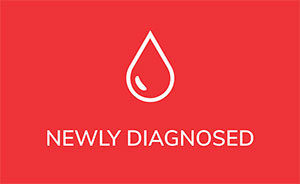The diagnosis of SLL requires the finding of an enlarged lymph node or nodes and/or an enlarged spleen with less than 5000 B-lymphocytes per microliter of blood (the absolute lymphocyte count or ALC is <5.0).
Once more than 5,000 cancerous B-lymphocytes per microliter have spilled over into the blood, we are said to have CLL.
Actually to be more precise and up to date, to diagnose CLL there needs to be ≥5000 monoclonal B-lymphocytes in the blood for the duration of at least three months.
SLL and CLL are considered to be the same disease (at least since 1994) simply found at different stages since they are both characterized by an excess accumulation of the exact same cell type with the identical immunological fingerprint or immunophenotype.
For convenience, most doctors and patients use the term CLL not CLL / SLL for the most common presentation of excess abnormal lymphocytes in the blood stream. That makes sense since more than 90% of us present with CLL at the time of diagnosis, not SLL and most of us with SLL will eventually develop CLL.
Originally published in The CLL Tribune Q3 2015



